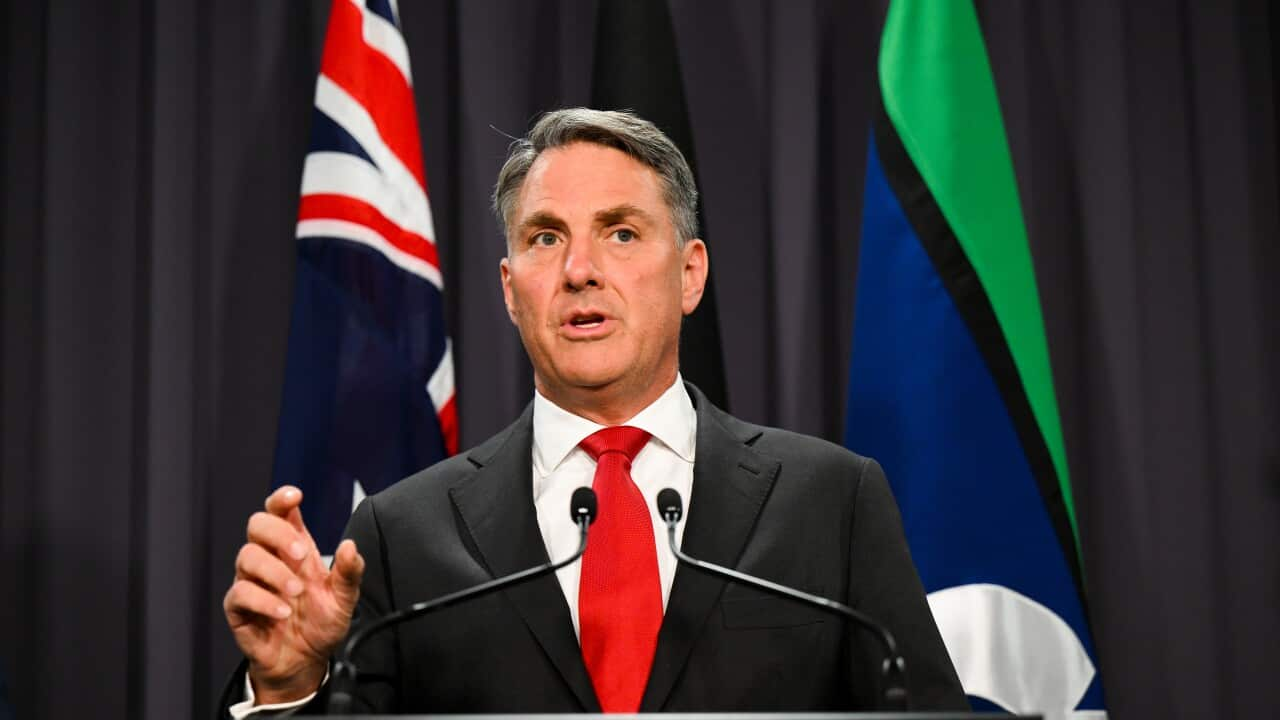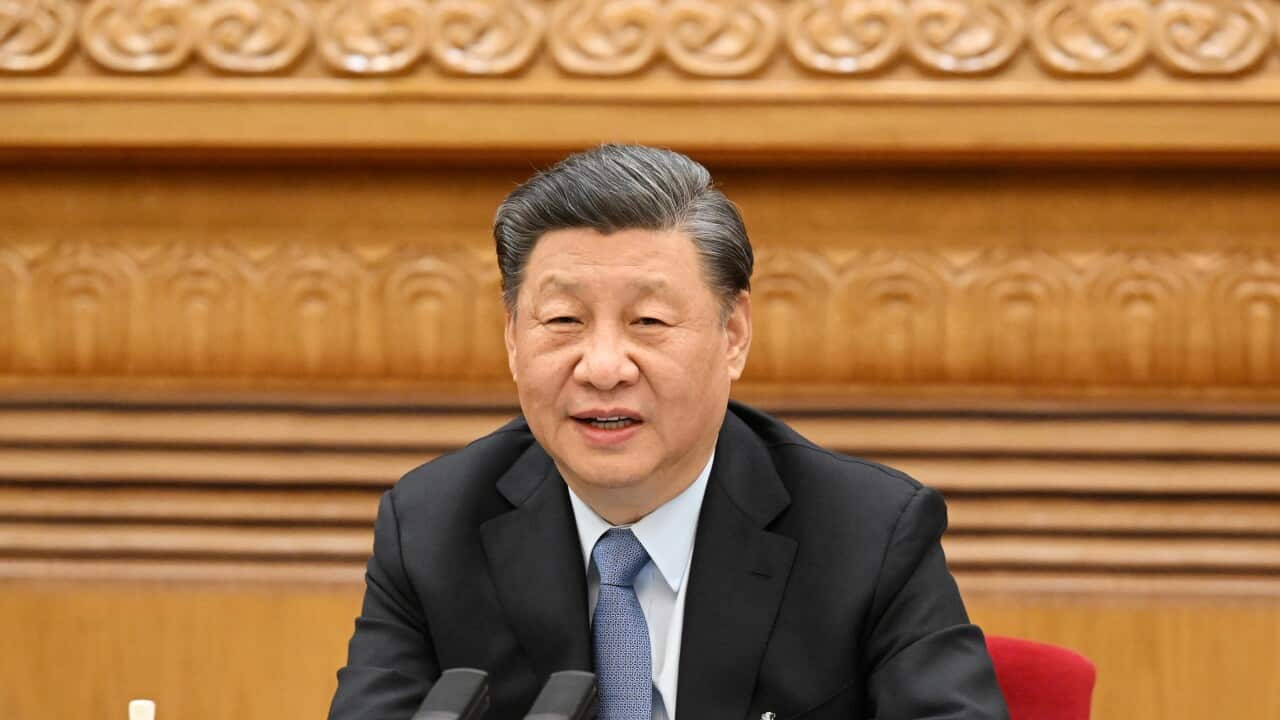Key Points
- The chosen AUKUS submarine design will use a sealed reactor.
- It means highly enriched uranium will be locked away for three decades until the reactor needs to be refuelled.
- Mr Marles said the first of the submarines' spent fuel rods would not need to be disposed of "until the 2050s".
As Australian Prime Minister Anthony Albanese, US President Joe Biden, and UK Prime Minister Rishi Sunak , many details of the historic deal had already been leaked to the press.
Apart from the eyewatering price tag - – there was one other element that stood out as new: defence minister Richard Marles announced Australia would dispose of high-level nuclear waste generated by the submarines domestically.
"That is a significant commitment to make. This is going to require a facility to be built in order to do that disposal," he said, adding the facility would be "remote from populations" and on defence land, "current or future."
It’s the first time since the AUKUS announcement was made 18 months ago that a definitive answer about future waste disposal has been provided.
Former independent South Australian senator and ex-submariner Rex Patrick has described the announcement as "deeply disrespectful to the Australian public".

The details of AUKUS' first major project have been unveiled. So what does it mean? Credit: Leon Neal / Getty Images
He claimed the AUKUS program was "wrapped in secrecy - not for military reasons, but for political sensitivity reasons - and that is highly wrong".
When will the problem of nuclear waste from the submarines need to be dealt with?
The chosen AUKUS submarine design will use a sealed reactor, meaning highly enriched uranium will be locked away for three decades until the reactor needs to be refuelled.
Mr Marles said that meant the first of the submarines' spent fuel rods would not need to be disposed of "until the 2050s".
But Mr Patrick said it had taken , with the Morrison government in 2021 selecting a site near Kimba in outback South Australia.
“Where has been the social engagement with the community about nuclear stewardship, nuclear regulation, how we deal with nuclear fuel, with spent nuclear fuel rods?” Mr Patrick said.
“These are things future generations of Australians need to know and shouldn’t be discussed in secrecy.”
When did the federal government make this decision?
Former defence minister Peter Dutton wouldn’t be drawn on whether Tuesday’s announcement was news to him.
“I'll let the Deputy Prime Minister talk more about that. There's more that we've been briefed on that I don't think is publicly available,” he said.
“The Labor Party signed up to AUKUS knowing they would have to deal with the waste, and now that they’re in government they know that’s part of the deal.”
When SBS News pressed Mr Dutton on whether that meant the Morrison government had already agreed to dispose of the nuclear waste domestically, before the May federal election, he would not elaborate.
"We will support the government in their decision as part of AUKUS, to deal with the waste in a way that would meet international standards."
The Defence department did not respond to SBS’s questions regarding when the decision was made, and the offices of Mr Albanese and Mr Marles were contacted for comment.
'It’s always announce, then defend,' says Kimba local
A ‘nuclear stewardship’ fact sheet uploaded to the Defence department’s website on Tuesday said all radioactive waste from Australia’s future submarine fleet – both low and high level – will be stored domestically.
Kimba local Sue Woolford is a staunch opponent of the proposed low-level nuclear waste facility near her town and said the announcement confirmed her long-held fears.
“When they changed the law to allow defence waste to come to Kimba, we knew this would happen,” she said.
In June 2021, three months before the AUKUS deal was announced, the Federal parliament passed amendments to the National Radioactive Waste Management Act to allow low-level defence waste to be stored at the Kimba facility – which had previously been flagged as a site for low-grade nuclear medicine waste.
The legislation specifically prevents high-level waste – such as spent nuclear fuel rods – from being stored there, but Mrs Woolford claimed this could be changed by a future parliament.
“It’s always ‘announce then defend’ with governments. Clearly, they haven’t learnt from the lessons of Kimba,” she said.
“It’s pretty poor they didn’t consult the Australian people.”
A judicial and constitutional challenge launched by the Barngarla Traditional Owners to overturn the waste dump decision is currently before the Federal Court, with a decision expected in the coming months.
Defence says 'no decision has been made' on facility location
The Defence department will undertake a review to identify locations “in the current or future Defence estate” that could store intermediate and high-level submarine waste.
The information, contained on the department’s fact sheet adds “no decision has been made on a location within Australia” and that “further technical work and consultation is required to determine preferred disposal pathways.”
In more than 60 years of nuclear weapons programs, the United States still does not have a permanent solution for the disposal of spent nuclear fuel derived from defence projects.
A proposed repository for spent fuel and high-level waste from nuclear power and military defence programs at Yucca Mountain in the Nevada desert was first flagged in 1987, but was abandoned in 2010, before being revisited in 2017 by the Trump administration.
Mr Patrick said it was essential the current government outlined how and where future spent nuclear fuel would be disposed of - before the acquisition of nuclear-propelled submarines.
"Australia must have the decommissioning answer, shared with public, before we start.
"We do not want to be in the situation the UK is in now. Their first nuclear submarine, HMS Dreadnought, was commissioned 60 years ago.
"It spent 17 years in service and has since spent 43 years tied to a wharf. None of the UK’s 22 retired nuclear submarines have been dismantled."










